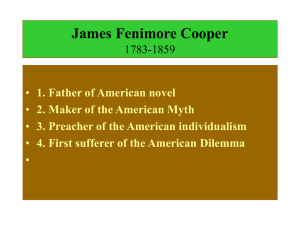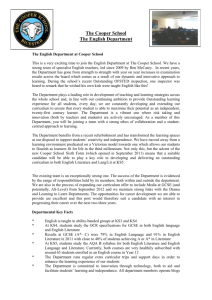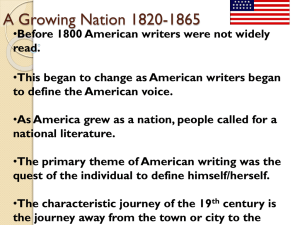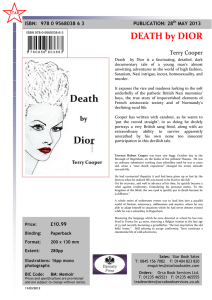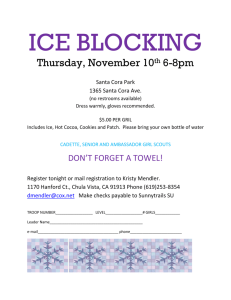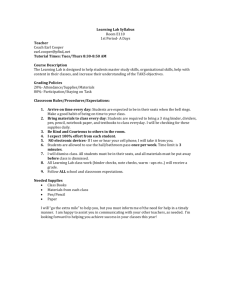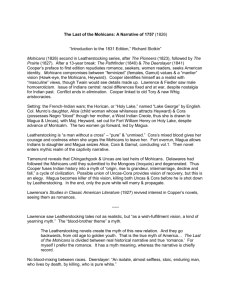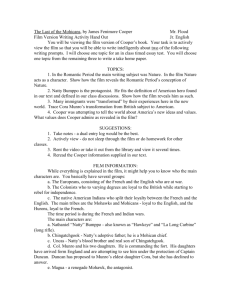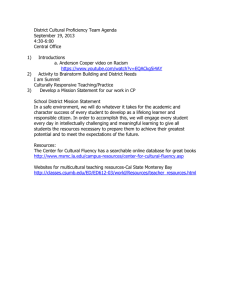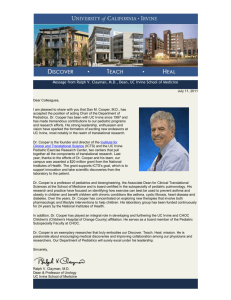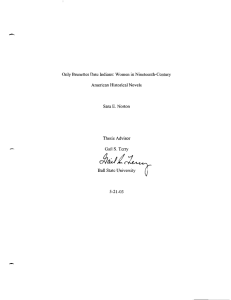Study and Discussion Questions for The Last of the Mohicans
advertisement
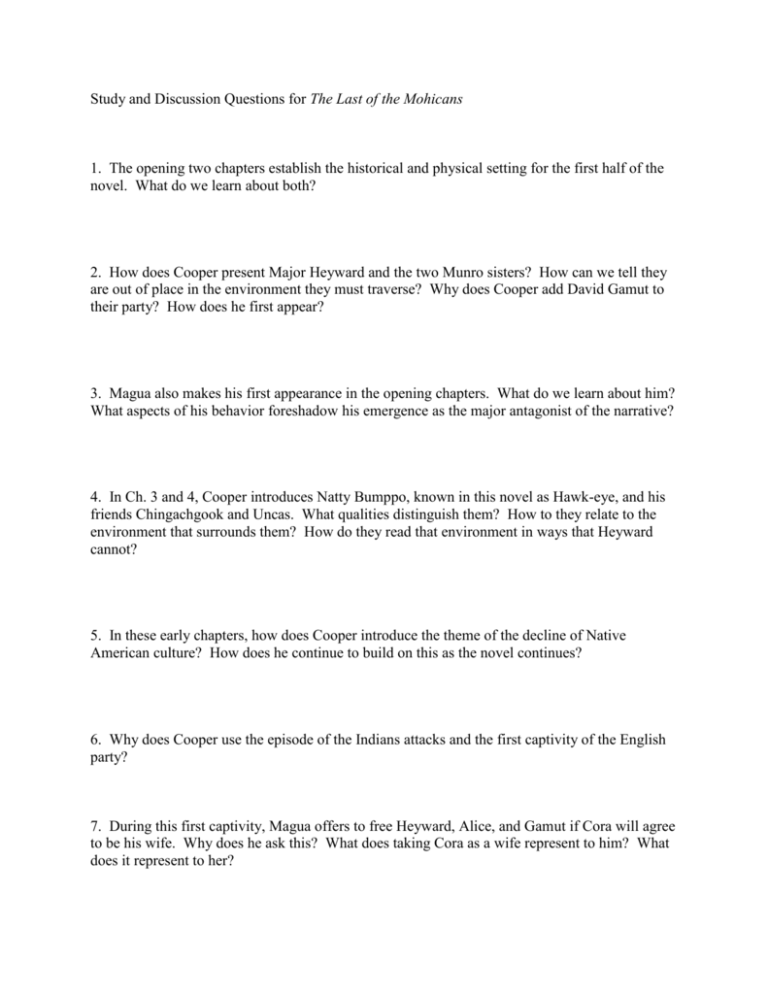
Study and Discussion Questions for The Last of the Mohicans 1. The opening two chapters establish the historical and physical setting for the first half of the novel. What do we learn about both? 2. How does Cooper present Major Heyward and the two Munro sisters? How can we tell they are out of place in the environment they must traverse? Why does Cooper add David Gamut to their party? How does he first appear? 3. Magua also makes his first appearance in the opening chapters. What do we learn about him? What aspects of his behavior foreshadow his emergence as the major antagonist of the narrative? 4. In Ch. 3 and 4, Cooper introduces Natty Bumppo, known in this novel as Hawk-eye, and his friends Chingachgook and Uncas. What qualities distinguish them? How to they relate to the environment that surrounds them? How do they read that environment in ways that Heyward cannot? 5. In these early chapters, how does Cooper introduce the theme of the decline of Native American culture? How does he continue to build on this as the novel continues? 6. Why does Cooper use the episode of the Indians attacks and the first captivity of the English party? 7. During this first captivity, Magua offers to free Heyward, Alice, and Gamut if Cora will agree to be his wife. Why does he ask this? What does taking Cora as a wife represent to him? What does it represent to her? 8. Hawk-eye, Chingachgook and Uncas save the captives and manage to get them safely to Fort William Henry. How does Cooper use this portion of their journey to develop more of the background on the conflict between the French and English for control of portions of North America? 9. Chapter 16 provides a respite from the journey and the tension that surrounds the fort. What does Heyward learn in this chapter? How does Cooper use the conversation between Heyward and Munro to tell the reader more about the differences between Cora and Alice? Why are these differences significant? Do they introduce problematic elements into Cooper’s narrative? 10. Chapter 17 presents the bloody siege upon the surrendered British troops and civilians. How does Cooper make use of language from captivity narratives? Why is he doing this? How does this chapter also continue to build the picture of the French-British conflict? 11. In Chapter 18, Cooper tells the reader that he is now about to leave the historical record for the rest of his narrative. Why does he do this? How does he begin to develop the elements of an American myth in the second half of the novel? 12. The second half of the book presents the extended captivity of Cora and Alice. In this instance, however, it is Uncas who steps forward to lead the quest for their return. What are the implications of this shift away from Heyward? 13. During the second half of the narrative, Cooper uses a number of scenes that seem to stretch the credulity of the reader, even if we agree that fiction involves the “willing suspension of disbelief.” What are the effects of the scenes of Natty dressed as a bear? Of Heyward as a medicine man? 14. Uncas is captured by the Delawares and Magua discovers that he now has his arch rival in a position to demand his death. How are his plans frustrated? 15. In Chapter 30, Uncas reveals his true identity. What is the effect of his revelation? How does Tamenund respond? 16. All of Magua’s prisoners are released, except for Cora, who must follow him into the wilderness. In the climax of the pursuit that follows, Cooper structures a symbolic drama that involves Magua, Cora and Uncas. What happens in this scene? What are the implications of what has occurred? 17. The last chapter presents the funeral for Uncas and Cora, and introduces once again what Cooper sees as the problematic issue of miscegenation for American culture. What is this so problematic for Hawk-eye? 18. In the last Chapter, Tamenund also delivers a lament for the fate of Native Americans. What does his lament reveal? Is it an appropriate closing to this novel? How do you interpret the implications of the ending for the American culture that will emerge a few decades after the novel takes place?
